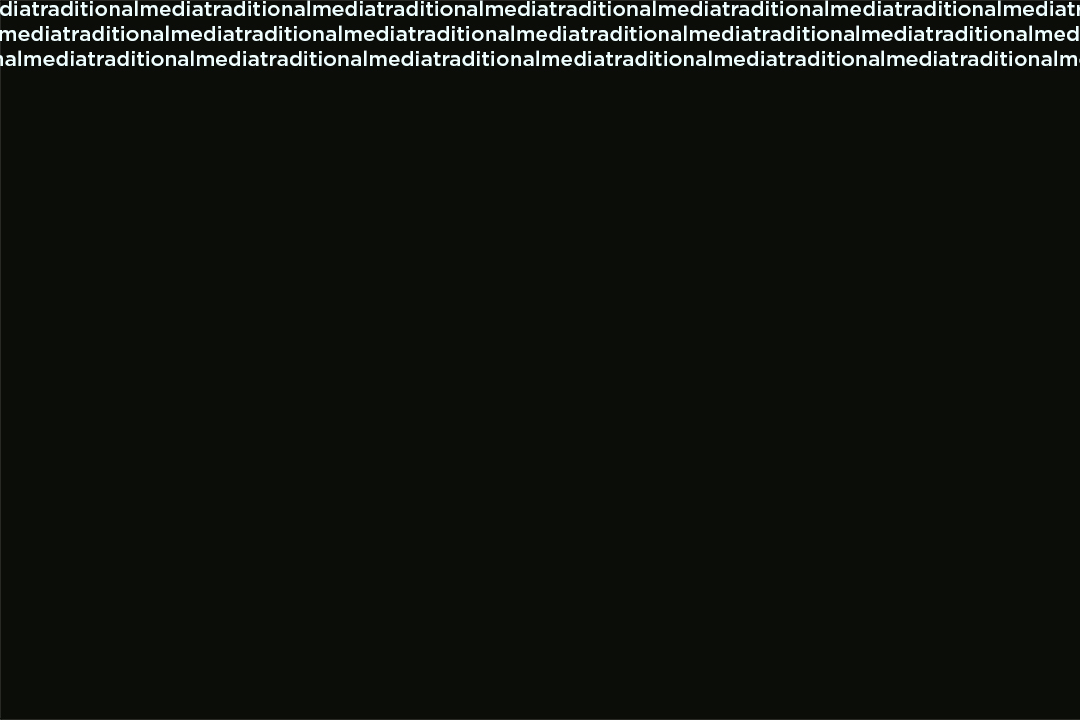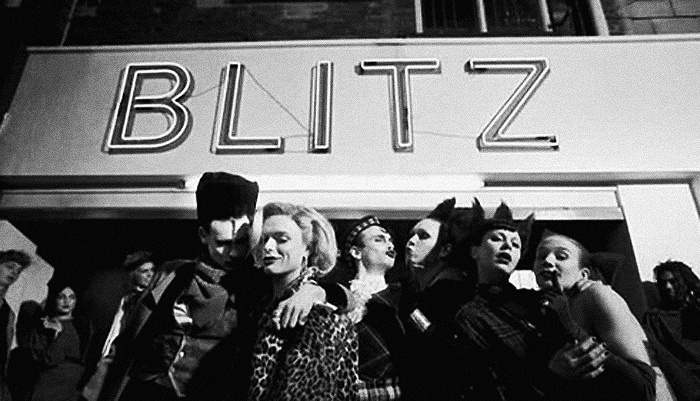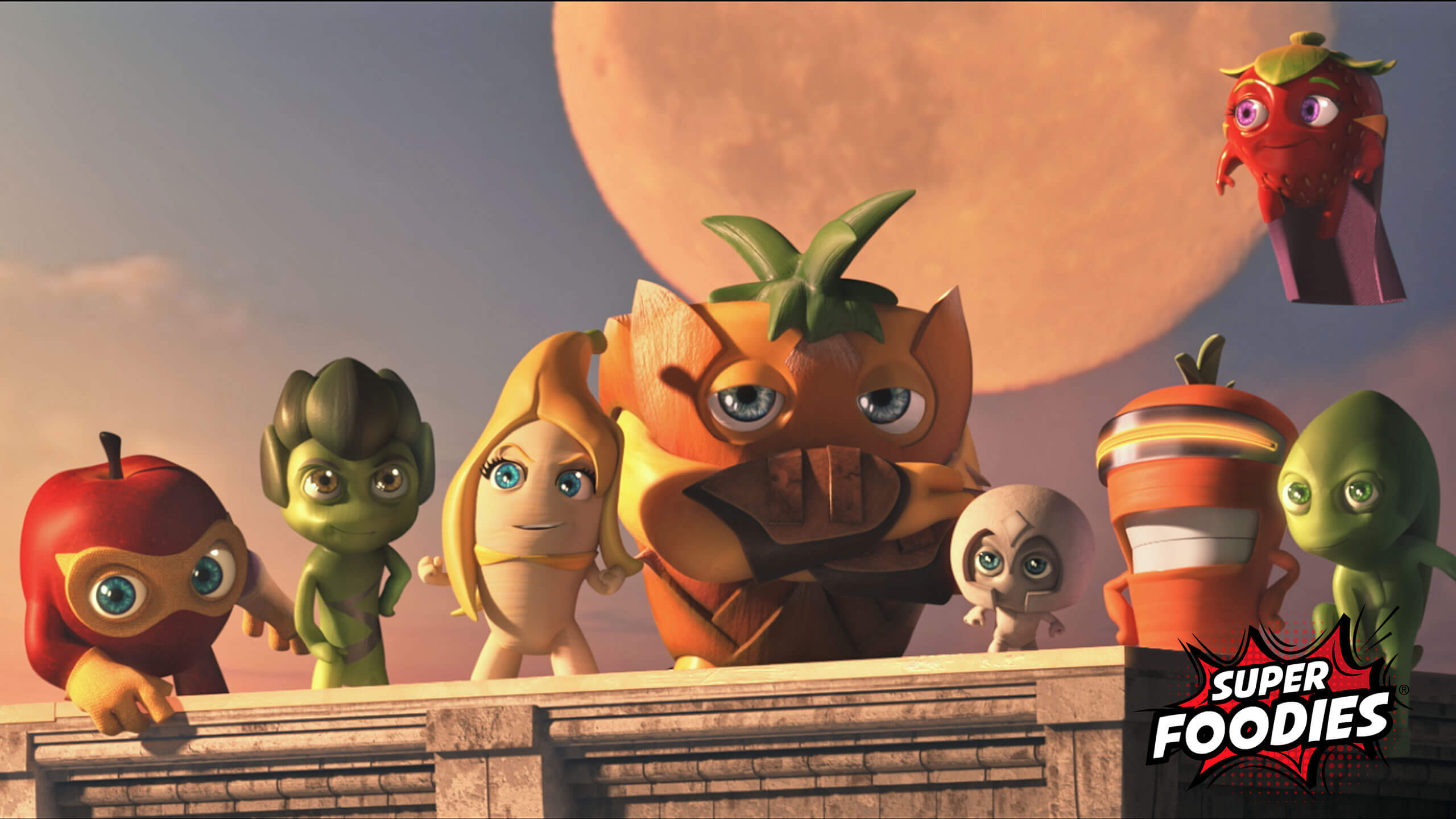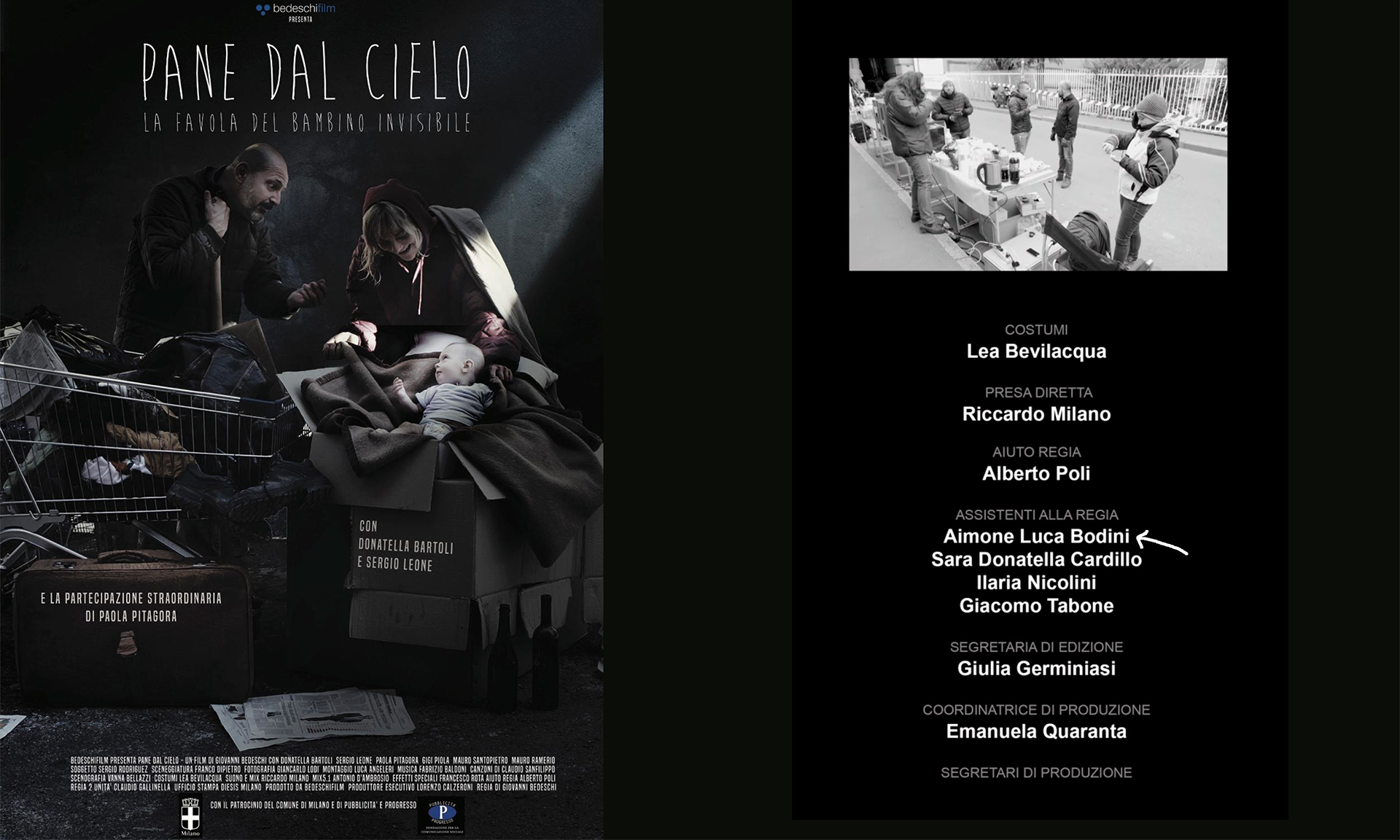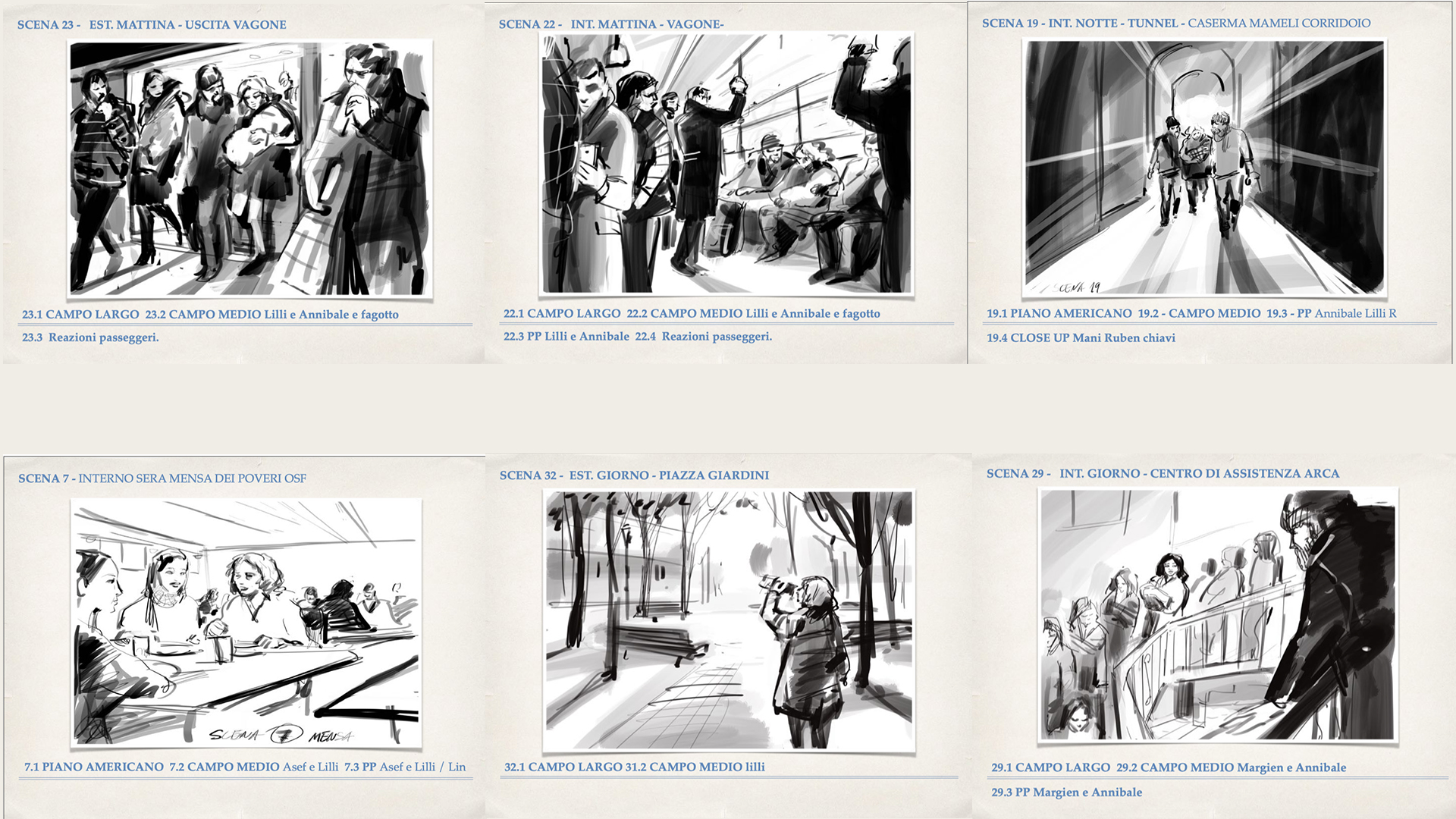AI Deepfake Holograms
A multimedia exhibit at the Design Museum in London to celebrate the Blitz Club, featuring holographic performances of an iconic pop band of the 80s.
My Role
The holograms consisted of a projection on a semi-transparent screen called Hologauze, designed to create the illusion of the performers being present in front of visitors in life-size scale. There was no archive footage that could be projected and give such illusion, therefore the footage required to be produced ad-hoc. The approach we identified was the one of casting actors in their early 20s who resembled the members’ body shapes and face geometry of the iconic pop band of the 80s (TB). After that I proceeded swapping their faces using Machine Learning tools so they would appear as Tony, Martin, Gary, John, and Steve.
Initial Research & Development
I had to identify a solution that was single-handedly manageable, sustainable, and compatible with the limited time and resources at my disposal. My journey started from something easy to pick up and play with. I explored all-in-one solutions like Runway and Viggle but quickly ran into limitations. Then I came across ComfyUI, an open-source, node-based AI tool that was being built and maintained by a community of developers releasing more and more features to generate or alter images and videos. Within Comfy UI I identified a custom node that could serve my purpose: ReActor. This process, however, became an unexpected opportunity. I found myself operating much more than usual in the terminal and handling system integration tasks: Python installations, PyTorch versions, CUDA drivers, environment paths, library conflicts. It gave me headaches at times, but when things finally worked, the sense of accomplishment was certainly rewarding.
Lessons Learned
AI faceswapping and deepfake creation exist on a spectrum; not all face alterations are “deepfakes”. Pre-shoot experimentation and rehearsal footage are critical to optimize the final recording. Actor face geometry heavily influences success; closer resemblance to the original improves realism. Working directly with terminal and system integration can be challenging but ultimately rewarding. Open-source tools allow rapid iteration and experimentation, crucial in early-stage R&D. Using open-source AI tools in commercial projects is a grey area: Each node, model, and dataset comes with different licenses and restrictions. It’s easy to overlook these dependencies, which can lead to legal complications if not carefully vetted. This project was a deep dive into AI filmmaking and and opportunity to experiment hands-on how all these new GenAi tools are shaping how we create images&videos, and the implications deriving from this new making process exploring open-source tools, dataset creation, and technical pipelines for a multimedia exhibit.
Super Foodies
Ideating a new IP for the retail giant Esselunga
Summary
It was an ambitious project that spanned all of Italy, marking the first of its kind for a retail giant. Esselunga’s SuperFoodies campaign aimed to highlight the importance of a healthy diet rich in fruits and vegetables to its customers. How? By introducing the SuperFoodies, fictional anthropomorphic characters with superhero-like powers. This multiplatform campaign featured collectibles in store and was brought to life through a cinematic 60-second TV commercial and various other contents for their promotion.
My Role
I played a pivotal role as a new business developer, initiating and cultivating opportunities to establish this partnership. Thanks to my existing network and track record of previous minor projects with the client, I introduced Proxima Milano to Esselunga. My strategic support was instrumental in building trust and laying the groundwork for successful project delivery. As the relationship evolved, I transitioned into a key account management role, focused on maintaining client satisfaction and ensuring ongoing project success.It was a lengthy endeavor during which I navigated the complex process of securing approvals from one of Italy’s largest companies. Working closely with the client taught me valuable skills in client interaction and underscored the importance of deeply understanding a brand. Over these 18 months, which involved presentations, speculative proposals, and detailed estimates, I felt deeply aligned to Esselunga’s ethos. I gained a profound understanding of their values, characteristics, and operational dynamics. Clients evolved into colleagues, and together, we pursued a shared objective.
Once the projects was complete, I earned a large commission I promptly reinvested into my personal and professional development, fulfilling a small dream of mine and flying to California for a new adventure.
Summary
“Truth is stranger than fiction”, a famous quote attributed to Mark Twain.
Working on the making of a movie is a movie of its own. François Truffaut knew it well when portraing the life of people working behind the camera in “Day for Night”.
“Pane dal Cielo” was a memorable work and life experience where I had to deal with long hours, little comfort, and a rigid hierarchy. Time is money, and this is even more true when you are shooting something and involving dozens or hundreds of people. A little delay can compound quickly, affecting the budget of the project and increasing the stress among people on set. That's why the need for rigid roles and quick problem solving is essential; working on set really pushes you to make decisions...fast. Luckily, everything was managed professionally and successfully by each member of the Directing and Production departments. We didn't end up like in “Lost in La Mancha”, instead, we formed strong bonds and went on to collaborate on some more projects together.
My Role
Based on the shooting list provided, together with the Assistant Director, I organized daily schedules for the entire crew using industry standard software Movie Magic. This involved handling delicate matters such as estimating the time required for actors’ makeup and for shots involving cumbersome equipment like dollies and cranes (Yes, there was a chase scene, and I was in the camera car, communicating with the rest of the crew over the radio.). This required considerable experience and attention to detail.I was also in charge of coordinating and managing background actors on the movie set, as well as recruiting them. Interestingly, for this project, we involved homeless individuals to participate in the movie thanks to the help of the charity Progetto Arca. This gave me the opportunity to recruit volunteers and interact with them frequently, listening to the stories they were eager to share. Their stories remain vivid in my mind. I keep wondering if truth truly is stranger than fiction. Finally, I had an epiphany: I realized with crystal clarity that being a cinephile and being a professional in the movie industry, are two very different things. I was convinced that once inside the filmmaking machine, during a cigarette or coffee break, I could have animated discussions about Dumont or Béla Tarr with everyone, from the camera operator to the set designer. But I was wrong. Many of them did not share this interest for the Art of cinema; they simply enjoyed the lifestyle of such a...job.
50+ Filmmaking projects
A starting point for honing my skills in audiovisual productions
Summary
During the early phase of my career, I took on nearly every role. Sometimes it was due to curiosity, other times because of my personality, and occasionally out of necessity. Handling projects from various perspectives greatly helped me empathize with others and better understand their needs, allowing me to support them more effectively in their roles. I'd recommend that everyone occasionally swap roles within their companies and organizations as a valuable exercise.
Sometimes LOW budget, some other time NO budget, in some cases OUR budget.
What mattered was completing the projects we cared about.
All-nighters and constant obstacles paid back by creating memorable experiences, built trust and credibility within the team, and fueled a relentless pursuit of growth to keep making better an better AV products.
What I liked most about my filmmaking era was the constantly evolving environment it offered. The frequent changes in scenery, locations, and project objectives led to a range of thrilling and diverse experiences. Each project placed you in a completely new context.
